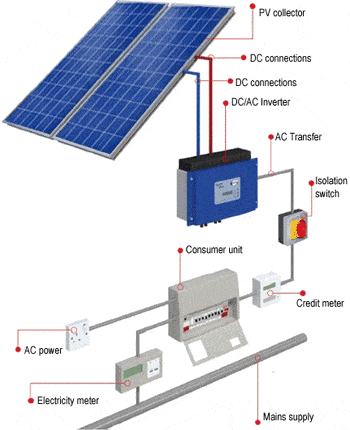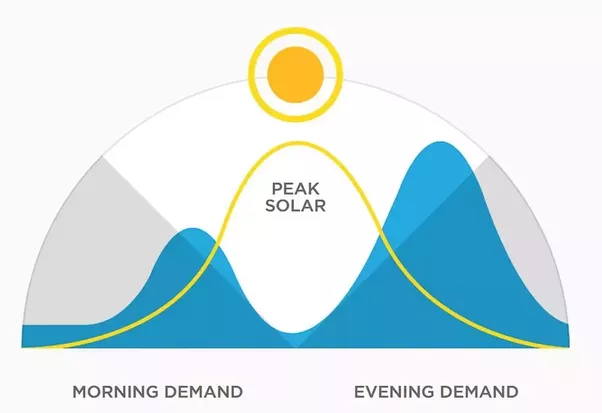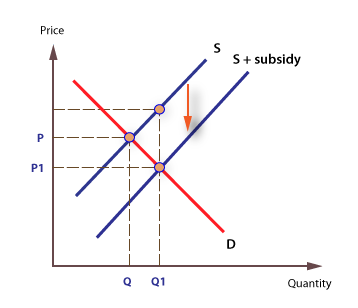United States Solar Energy PV
Solar Energy is a revolutionary technology that is changing the global energy landscape. Renewable energy advocates believe it is a technology that can soon replace fossil fuels. However, many believe that the technology is too costly for how much energy it can produce.

Solar energy is something that is constantly being emitted by the sun in the form of heat and light. Since the discovery of Photovoltaics (PV), which is the conversion of sunlight into electricity using semiconducting materials, scientists and energy pioneers have developed solar panels for consumers,businesses, and governments alike to produce electricity. This is a revolutionary technology, as society is more aware than ever about the devastating effects of climate change, carbon emissions, and other fossil fuel externalities. Consumer use of solar panels was previously reserved for ultra-wealthy environmentalists, who were attempting to make a difference by purchasing residential panels for large sums of money. Today, solar panel systems are cheaper with prices ranging between $12,500 and $25,000 depending on kW size and tax credits.

Solar energy comes with many benefits. The main benefits being that it is renewable and abundant. If humans are on earth and consuming electricity, we will be able to harness the power of the sun. Harnessing solar energy also does not create significant amounts pollution or externalities. However, some argue that the manufacturing and transportation of solar energy should be considered when evaluating pollution. While this is a very valid point, the amount of pollution and CO2 emitted from manufacturing and transportation is significantly smaller than the pollution emitted from fossil fuel operations. Another benefit of solar is that it can be harnessed in any part of the world if there is significant sunlight. This means that if there is proper financial backing, solar panels can be installed on a global scale and aren’t restricted by geographic and natural factors such as hydro.
However, there are also a few key issues that come with the creation of solar power. The biggest and most polarizing issue is understanding the economics behind solar panels. Some smaller issues include the previously mentioned pollution from transportation and manufacturing, the need for rare and precious metals, the large amount of space needed for panels, expensive energy storage and intermittency.

Intermittency is an issue when understanding efficiency of energy sources. At night, no light energy is being emitted from the sun at the particular location, which means that no energy is being produced from the solar panel creating a dependency for fossil fuel sources during peak energy hours. Intermittency is a huge issue for renewable energy but much more so for wind energy than solar. Wind is based on weather, a factor that is much less predictable that solar energy. The predictably factor for solar is huge when understanding when there will be electricity generation and when consumers use the most electricity. Since these trends are much easier to predict, solar energy intermittency is much less of a problem than wind intermittency. However, solar is significantly less efficient than current coal, natural gas, and nuclear operations where capacity factor is much higher. This is because they are able to produce electricity at essentially all hours of the day.
The main issue of solar power is the economics involved with developing the technology. Solar panels come at a rather large cost and right now the efficiency isn’t quite where it needs to be in terms of being competitive with fossil fuels such as coal. For solar to be more cost effective, various governments have created subsidies and tax credits for residential, commercial, and utility panels. The current tax credit for residential and commercial solar projects is currently at 30% and this tax credit will continue to take place through at least 2019.
Environmentalists argue that these subsidies are necessary to spur more long term economic development by incentivizing businesses and residents to purchase solar panels. The profits that are generated then go into R&D which will make PV technology more advanced and cheaper in the long run. Industrialists and people who believe in completely free market capitalism highly criticize these subsidies and tax credits. They say that these subsidies create an artificial demand and promote “crony capitalism” and they would technically be correct. This artificial demand may make the panels cheaper and more accessible but it comes from the pocket of the American people. Some Americans, particularly ones from poorer, more rural areas, don’t want to pay higher taxes to fund a technology they don’t use or particularly like. Some Americans deny climate change and would be very happy using coal and other cheap fossil fuels to fuel their homes and cars until the day they die.

However, a common misconception is that only renewable energy manufacturers receive subsides from the government. Both fossil fuel and renewable energy receives government assistance but renewables receive significantly more on a consumer, commercial, and utility basis. It should also be noted how efficient each type of energy with its subsidy on a dollar per megawatt hour basis. In 2013, the IEA reported that coal was given $1,075,000,000 in subsidies while solar was given $5,936,000,000,000, a significantly larger amount. To understand if this money was spent effectively, we should look at electricity generation from these sources during that year. Based on the same IEA report in 2013, coal generated 1,581,115,000 MWh of electricity while solar produced only 9,036,000 MWh’s. Analyzing these two numbers, we can come up with how much each MWh costs with each type of energy. The outcome of coal costs $0.68/MWh while solar costs $589.64/MWh.
Based on this data we can conclude that coal is a much more efficient way to spend tax dollars in terms of energy. So why do we keep subsidizing renewables, specifically solar? It all comes back to climate change and what we need to do as a nation to try and stop it. Governments want to begin the transition into more renewable sources of energy to combat climate change. Since the technology is so new, it requires large sums of money for R&D and manufacturing compared to our already established oil, gas and coal infrastructure. The result is that the government uses tax payer dollars to essentially jump-start the renewable industry and make it more economically viable to consumers compared to fossil fuels.

Something that is often overlooked when debating the economic efficiency of renewables versus fossil fuels is the cost of externalities. The International Monetary Fund conducted a study where externalities such as pollution, waste, and other hazardous byproduct of fossil fuels have an estimated cost of nearly $5.3 trillion a year. Keep in mind that this is a global context and this article is centered around electricity within the United States. However, the United States has significantly contributed to this number. The point is, it is extremely hard analyze and examine just how costly it is when water, air, or land is polluted but this often-overlooked financial burden should not be ignored when discussing subsidies, taxes, and economics of renewables versus fossil fuels
When dealing with black and white economics, solar energy does not even come close to how cheap and efficient fossil fuels such as coal are in producing electricity. America will greatly depend on the stability and reliability of coal for years to come but I believe it needs to start being phased out and replaced by renewables such as solar. While many Americans cannot afford solar panels and even though solar provides a small fraction of America's electricity, I believe that tax credits and subsidies will be necessary in developing our nation in a healthy and holistic way. I believe free market capitalism is the answer to most of our nation’s problems nine out of ten times but the externalities we are experiencing in terms of pollution and climate change are simply a market failure. When citizens of the United States are feeling the pain of market failures, it is the obligation and duty of the United States government to address it. One way to address it is to intelligently, effectively, and resourcefully use tax credits and subsidies to incentivize businesses to produce effective, clean, and safe forms of energy, and that’s exactly what I think the United States of America should do with energy policy moving forward.